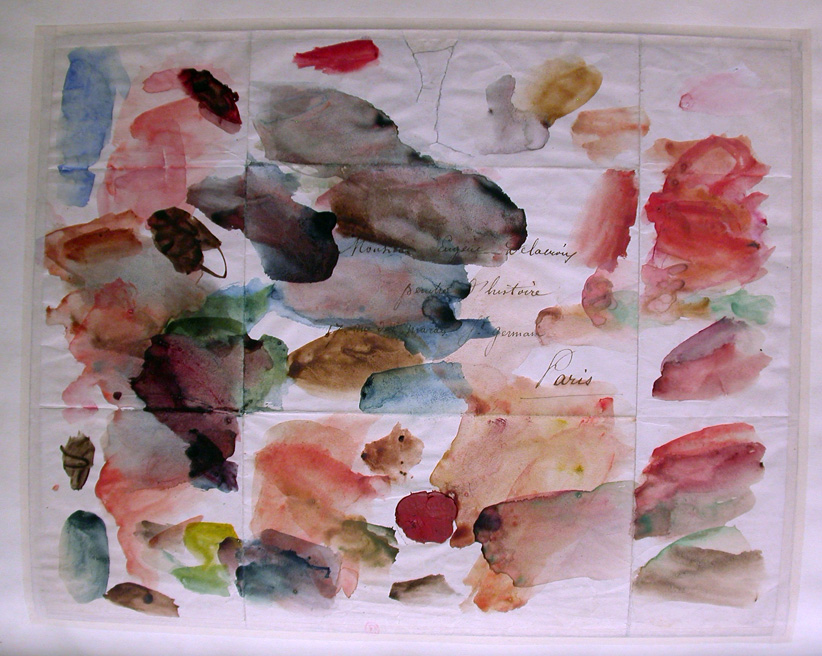- Accès directs
Ming TIAMPOChercheuse invitée
Du 1er au 31 juillet 2024
Ming Tiampo est professeure d'histoire de l'art et codirectrice du Centre d'analyse culturelle transnationale de l'Université Carleton. Conservatrice d'expositions et d'engagements publics, elle a été co-commissaire de l'exposition Gutai: Splendid Playground au Musée Guggenheim de New York (2013), et est l'une des co-directrices de Worlding Public Cultures, un forum transnational d'échange de recherches, Asia Forum for the Contemporary Art of Global Asias,, une plateforme discursive péripatétique, et un membre associée d'ici Berlin, un institut de recherche interdisciplinaire tourné vers le public. Spécialiste des modernismes transnationaux, elle a écrit Gutai: Decentering Modernism, University of Chicago Press, 2011, et s'intéresse aux diasporas comparées, examinant les histoires de la migration après l'Empire, en mettant l'accent sur les artistes d'Asie, d'Afrique et d'Amérique latine des anciens Empires français et britannique. Elle est l'auteur de Jin-me Yoon: Life and Work , Art Canada Institute, 2023, et fait partie du collectif éditorial d'Intersecting Modernisms, un ouvrage de référence collaboratif sur les modernismes mondiaux. Ming Tiampo est membre associée d'ici Berlin et membre du Hyundai Tate Research Centre : Transnational Advisory Board.
Le projet de recherche de Ming Tiampo à l'INHA s’intitule Mobile Subjects, Contrapuntal Modernisms (1945-1989) et étudie la circulation des artistes du monde décolonisé à travers les capitales coloniales et artistiques de Londres et de Paris. Cette histoire de deux villes examine comment ces capitales d'empires décolonisateurs ont fonctionné en tant que lieux de rencontre critiques, des centres anticoloniaux et des sites d'échange dans les décennies qui ont suivi la Seconde Guerre mondiale en raison des migrations massives d'après-guerre. Ce projet propose un nouveau modèle analytique qui utilise l'histoire de l'art numérique pour visualiser les métropoles, non pas comme des points d'origine ou des terrains d'entraînement mondiaux, mais comme des espaces d'intersection et de flux qui permettent de comprendre la condition transnationale de l'art moderne.
English version
Ming Tiampo is Professor of Art History and co-director of the Centre for Transnational Cultural Analysis at Carleton University. A curator of exhibitions and public engagement, she co-curated Gutai: Splendid Playground at the Guggenheim Museum in New York (2013), and is one of the co-leads of Worlding Public Cultures, a transnational forum for research exchange, Asia Forum for the Contemporary Art of Global Asias, a peripatetic discursive platform, and an associate member of ici Berlin, an interdisciplinary public-facing research institute. A specialist in transnational modernisms, she wrote Gutai: Decentering Modernism(University of Chicago Press, 2011), and is interested in comparative diasporas, examining histories of migration post-Empire with an emphasis on artists from Asia, Africa, and Latin America from the former French and British Empires. She is the author of Jin-me Yoon: Life and Work (Art Canada Institute, 2023), and is part of the editorial collective for Intersecting Modernisms, a collaborative sourcebook on global modernisms. Tiampo is an associate member at ici Berlin, and member of the Hyundai Tate Research Centre: Transnational Advisory Board.
Tiampo’s project at the INHA, Mobile Subjects, Contrapuntal Modernisms (1945-1989) investigates the circulation of artists from the decolonizing world through the colonial and artistic capitals of London and Paris. This tale of two cities considers how these capitals of decolonizing empires functioned as critical meeting places, anti-colonial hubs, and sites of exchange in the decades after World War II due to postwar mass migration. It proposes a new analytical model that uses digital art history to visualize metropoles not as points of origin or as global training grounds, but as spaces of intersection and flow that allow us to understand the transnational condition of modern art.














